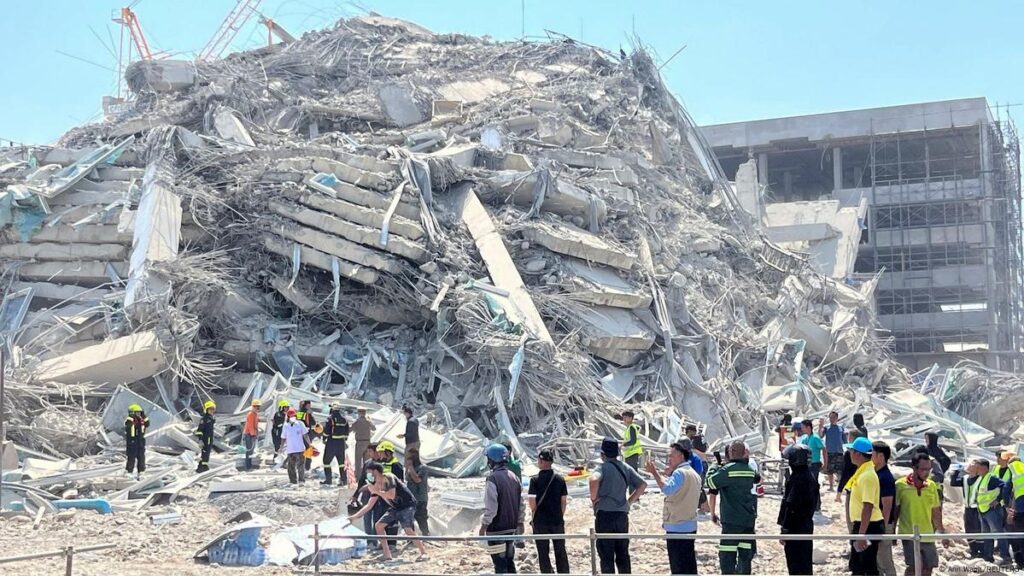A Devastating Quake Rocks Southeast Asia
A powerful 7.7 magnitude earthquake struck near Mandalay, Myanmar, on Friday, sending tremors across Southeast Asia and causing significant damage in Bangkok, Thailand, where a skyscraper under construction collapsed. The quake, which hit at a shallow depth of 10 km (6.2 miles), triggered panic, forced evacuations, and left at least one dead in Bangkok, with rescue teams scrambling to search for survivors.
The United States Geological Survey (USGS) confirmed the earthquake’s epicenter was just 17.2 km from Mandalay, Myanmar’s second-largest city (pop. 1.5 million). A strong aftershock followed, exacerbating fears of further destruction.
Key Impacts
- Bangkok, Thailand:
- A high-rise building under construction collapsed, killing one and trapping dozens of workers. Rescue operations are ongoing.
- Hotel guests fled in panic as water from a rooftop pool cascaded down a luxury high-rise.
- Widespread reports of cracked walls, shattered windows, and power outages.
- Myanmar (Epicenter):
- Buildings collapsed in Mandalay, though official casualty figures are still pending.
- Myanmar’s Fire Services Department reported teams are assessing damage but have no confirmed reports yet.
- Rural areas near the epicenter are at high risk due to poor infrastructure.
- Regional Effects:
- Tremors felt in northern Thailand, Laos, and parts of China.
- No tsunami warnings issued, but landslides are possible in mountainous zones.
Why This Quake Was So Destructive
- Shallow Depth: At just 10 km deep, the quake’s energy had a more violent surface impact.
- Urban Vulnerability: Mandalay and Bangkok have dense populations and older buildings not designed for high-magnitude quakes.
- Aftershock Risk: The USGS warns of additional tremors, which could worsen damage.
Response and Rescue Efforts
- Thailand: Emergency teams are searching the Bangkok skyscraper rubble for trapped workers. Hospitals are on high alert.
- Myanmar: Authorities are surveying damage in Mandalay, but communication disruptions may delay assessments.
- International Aid: Neighboring countries and NGOs are mobilizing disaster response teams.
Historical Context
- Myanmar sits on the Sagaing Fault, a major seismic zone responsible for past deadly quakes.
- Bangkok, though farther away, is built on soft soil, amplifying tremors.
A Race Against Time
With lives at stake and infrastructure crippled, the focus is now on rescue and recovery. As night falls, the threat of aftershocks and landslides looms, while survivors brace for the aftermath.
For real-time updates, follow official sources like the USGS and local emergency agencies.
